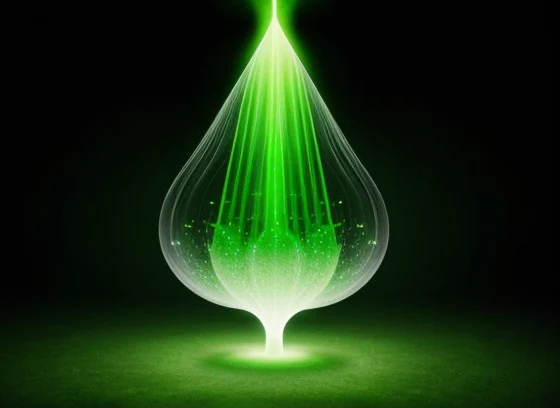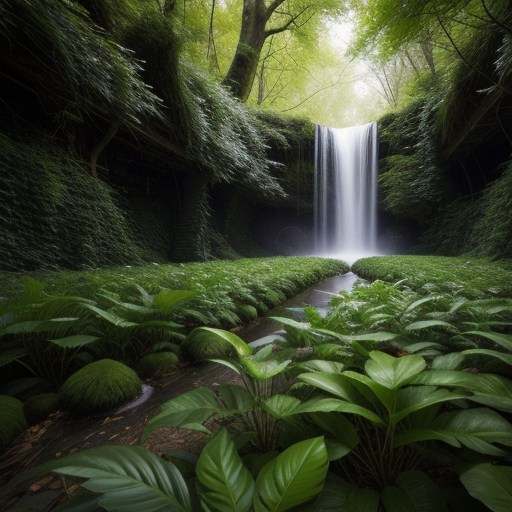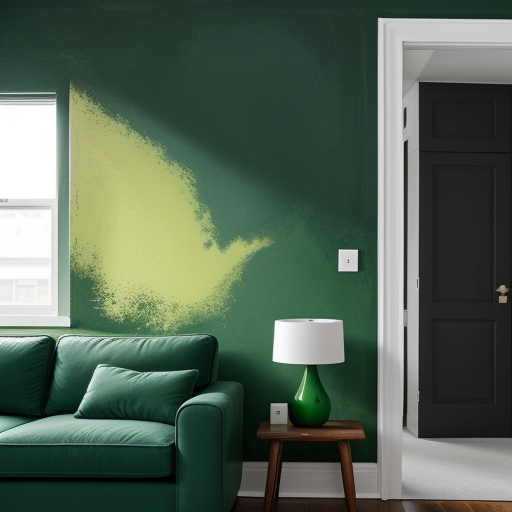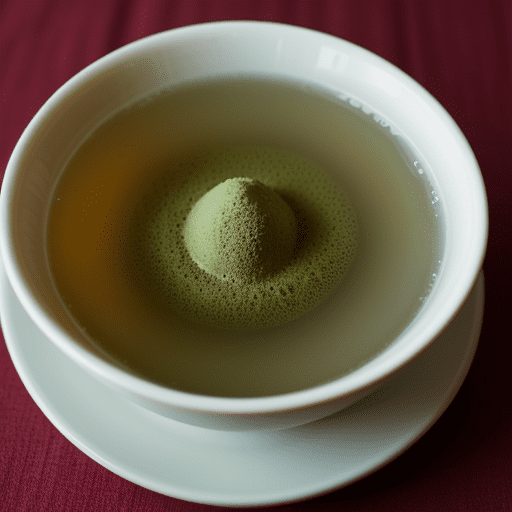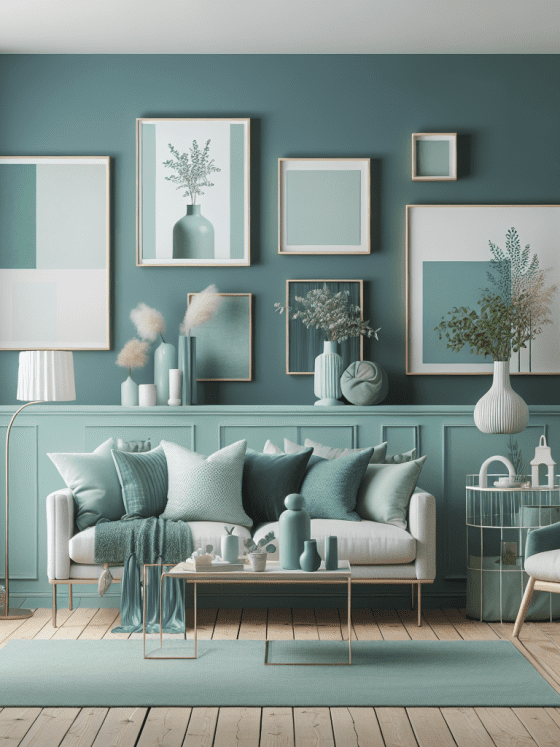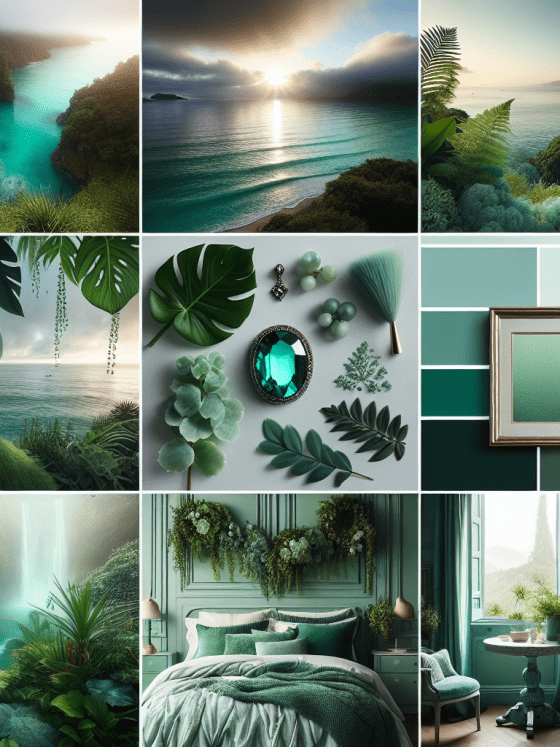Exploring the Beauty and Significance of Green Jade
Green jade, on the other hand is foremost a beautiful gemstone and secondly alludes to its symbolism derived from history and culture. A stone that is esteemed among both Western and Eastern civilizations alike for the tranquility, harmony, balance picturesque of this familiar mineral known by many as the “Stone of Heaven” during ancient Chinese time. Not only is green jade beautiful to look at, but it carries serious weight with its meanings and properties which are believed to help protect people against harm. With its rich, natural color in brilliant green and opulent texture this gemstone is a preferred by many craftsmen of ornamental art objects as well as jewelers for contemporary fine jewellery pieces. The finely detailed jade carved works are a reflection of the worship and attention to details over this stone by its artisans throughout history. Culturally speaking, green jade is more than mere jewelry; it embodies purity, wisdom and prosperity. In more recent times, its classic beauty still enchants, fusing tradition with modern day art.
Historical Significance
Green jade was an important part of Asian aestheticism and the culture of other civilizations (primarily pre-columbian America). Jade is a green gem that has been cherished since ancient China called “yu,” or “royal gem”, embodying purity, wisdom and morality. It was used in delicate carvings for imperial paraphernalia, religious symbols and burial objects to express respectively the authority/infinity. Emperors were often covered jade bars and emblems, due to the fact they idea bestowing those gadgets at them offered safety in addition to it become consultant of everlasting existence. They considered green jade every bit as precious in Mesoamerican civilizations such as the Olmec, Maya and Aztec cultures. It was molded into gods, religious artifacts and gem stones that symbolized life, birth abundance. Jade was originally more valuable than gold to the Maya, an object of superstition and ritual in their reverence for jade (also known as “quetzal xuk-xul”), made into tools, beads incense burners,including funeral masks. In conclusion, the historical value of green jade has always been associated with life and purity even spiritual transcendence that is why nuresly.herokuapp.com/ refers to it as a treasure from ancient time.
The origin of jade and its early usage
Green jade was an important part of Asian aestheticism and the culture of other civilizations (primarily pre-columbian America). Jade is a green gem that has been cherished since ancient China called “yu,” or “royal gem”, embodying purity, wisdom and morality. It was used in delicate carvings for imperial paraphernalia, religious symbols and burial objects to express respectively the authority/infinity. Emperors were often covered jade bars and emblems, due to the fact they idea bestowing those gadgets at them offered safety in addition to it become consultant of everlasting existence. They considered green jade every bit as precious in Mesoamerican civilizations such as the Olmec, Maya and Aztec cultures. It was molded into gods, religious artifacts and gem stones that symbolized life, birth abundance. Jade was originally more valuable than gold to the Maya, an object of superstition and ritual in their reverence for jade (also known as “quetzal xuk-xul”), made into tools, beads incense burners,including funeral masks. In conclusion, the historical value of green jade has always been associated with life and purity even spiritual transcendence that is why nuresly.herokuapp.com/ refers to it as a treasure from ancient time.
Cultural importance in ancient civilizations (China, Mesoamerica)
This majestic stone that can only be matched by the beauty of the ocean has a very rich cultural heritage both in ancient China and Mesoamerica. In China, jade (known as “Yu”) has a history slightly over four-thousand years—about the same amount of time copper and gold have been utilized. It was commonly used to carve into exquisitely crafted ceremonial pieces, such as ritual staffs and burial suits made for emperors. The most noteworthy of the exalted qualities Confucius attributes to jade illustrate it as a symbol representative of humaneness, intelligence (referring here not only intellectual capacity but context within societal moral framework), bravery and being humble. The Chinese faith in jade for its protection and healing attributes placed the material on an even higher level.
It is a fact that all three of the South Mesoamerican cultures (Olmecs, Maya and Aztecs) found as much value in green jade. Water, fertility and life were typically linked with it because of its color full appearance as well rarity. Jade was made into masks, jewellery and used as sacred objects within rituals similar to burials. To these peoples, jade was not just a material but also the embodiment of life force and an intercessory agent between physical reality and the spiritual universe; its allure is never fleeting due to deep cultural implications.
Myths and legends associated with jade
Green jade, on the other hand, has always been one of those jewel tones that is revered with thousands of years history and mythology behind it which makes this stone alluring beyond just its vibrant hues. Jade in Chinese Culture—Heavenly Stone, which is well-known as the epitome of Five Virtues: wisdom, righteousness [justice], kindness [benevolence] courage and modesty. One of the best-preserved examples is this jade pendant, which dates from 3200 BCE and might belong to a family of funerary objects called bi—ritual discs placed over openings (eyes or mouths) in corpses that helped dead souls find their way safely through heavenly portals. Another tale that still lives is the Jade Rabbit, pounding away at his mortar and pestle to make elixir of life.
Two Mesoamerican civilizations, the Aztecs and Maya, revered jade more than any other stone; because it represented life-giving water (god) in their lore, hence its daily role. Such cultures utilized jade in ceremonial burials, often to enhance or enable the passage of the deceased life into an afterlife domain. Jade, with these stories and beliefs surrounding it has been treasured not as a gemstone but worshiped by many cultures throughout time.
Types and Varieties of Green Jade
Jade is a beautiful semi-precious stone that has significant cultural value, especially to China but also to many other places, and there are generally two main types of jade; nephrite or greenoxide which the locals call it “old mine lao shan” freopen Nephrite – a variety of the hydrous calcium magnesium silicate mineral with important physical properties that lends itself to being carved into ornaments, it often displays creamy green colors and is renowned for its toughness and waxy luster. The Chinese have been cherishing this kind of quartz for over thousands of years and consider it the embodiment of honesty, purity and integrity.
Jadeite, a pyroxene mineral, is much less common and valued for brighter colours that are often more translucent. Jadeite appears in a variety of green hues, with the richest being an emerald-green understood as “Imperial Jade. Because this type contains so much chromium, it has an almost mystical brilliance.
Coming in these shades you will be able to appreciate jade’s texture or pattern which may differ depending on the type of jade such as ” Moss-in-Snow” where, dark and light greens cut through each other forming a contrasting juxtaposition. Each type and variety of green jade has its own special charm, steeped in tradition and symbolism that it will forever remain a source of interest.
Jadeite vs. Nephrite: Key differences
The raw zhang jade is either nephrite or another variation called www.agate.com.pl/?Jadeite, with both types of stone being incredibly attractive and meaningful in their own right. The most valuable jadeite is a striking and even emerald-green color, known as imperial java; restating why it is considered more precious than its counterpart. It is denser and harder compared to nephrite, therefore allowing it a shiny shininess in great precious jewelry. While on the other hand, jadeite has this crystalline nature which brings in a level of translucency itself and that is something very much sought after.
Nephrite (the more common and utilised material in history) comes with softer pale creamy colours, across a range of greens all the way through to white with other relative Colour deposits such as brown or even black. It is more fibrous and tougher interlocking than slow growing Au-Ora Kauri making it an alternative favoured by traditional carvers when carving items such as artifacts. The lesser saturated colours make nephrite the less flashy cousin to jadeite, but its wealth in history and generations of cultural importance (notably within Chinese and Maori culture) makes it hold just as much power.
The contrast spoils the good characteristics from its artistic value, not to mention historical and jewelry components of each type so jade is usually appreciated differently.
Notable jade-producing regions
Known for its beautiful tones and rich past, green jade benefits notably differentiation in source which range through-out the many areas worldwide. Once known as Burma, Myanmar is the world’s top source for jadeite, a prized green stone. Some of the finest jadeite gemstones ever mined have been extracted from mines in northern Myanmar’s Kachin State, near Hpakant.
China has been another major jade producer, and geologists recently confirmed that the precious green-stone of ancient China was nephrite jade. Mutton fat jade is creamy whitish translucide and a deep green, it is one of the most sought-jadeite from Xinjiang region Hethian. The global availability is also boosted by Russia, where the siberian Baikal region continues to provide large amounts of nephrite jade. More precisely, they have been mined for a hundred and fifty years in the Sayan Mountains. Guatemala, in Central America is famous jadeite mines that have had great importance since prehistoric Mayan times.
They, and some of these areas harvest the lovely stone in addition to being rich with histories also native legends about all matters jade.
Quality grades and what affects jade value
Since different grade of green jade, especially Jadeite quality have direct influence on the price and there are some very important factors which decides a better high or low to middle level color, transparency texture and workmanship.
Color is an important determinant and some of the most valued green jade consists of a rich, eumeadescent “emerald” colour often referred to as “imperial”. They are a lighter shade of color, and have secondary tones; blues or gray in this case).
Transparency falls somewhere between completely opaque and utterly transparent. See-through is what you are looking for made possible by the light that enters through this semi-transparent substance, which upholds it quality.
Texture refers to how fine a jade has been. Well-mined jadeite is usually texture-wise fine, without any obvious interior or surface deficiency.
Well, craftsmanship is another factor. Highly detailed and finely produced carvings add to the value of jade as it would require considerable skill, dexterity and artistry in working with this hard material.
When we give each a numerical value for transparency, texture and color ranging from 0 to 4 (with higher scores indicating better quality) the equations balance pretty well in terms of green jade.
Aesthetics and Physical Properties
Green jade, globally worshipped gemstone for believes as well its astonishing look and exceptional physical attributes. Jade that is green in color comes in a wide range of tones, ranging from light and almost translucent to deep emerald greens; each color depleting has its own kind of ardor. The luster can also vary quite substantially as Jade may have either an oilily-dull gleam or glistening glassiness (Xu et al., 1984). This combination gives the material a most alluring beauty, which is why it has become so popular in both ornamental carvings and jewelry that glows with an incredible warmth.
It is also known for its toughness, which results from its tightly grown fibrous crystal structure. These qualities have given rise to its use in both decorative art, and ancient tools and weapons. Green jade, which is usually nephrite or jadeite, has a high level of toughness; despite the fact that it looks delicate af if breakage / chipping super easy. The coloration and strength of Marble is also inspiring the composition mainly consists with calcium, magnesium and iron gives a peculiar look to marble used especially for floors stands as fit example of endurance & beauty.
Physical characteristics (color, texture, luster)
Green jade has long been a favourite feature of many jewellery lovers by virtue of its remarkable aesthetics and fine unique attributes as one such precious gem. Green jade comes in a variety of shades, from light, slightly opaque green to deep rich greens based on the amounts of different impurity elements—chromium and iron being important. The top most desired variety of jade is imperial — a rich, emerald-green colour that is vibrant and consistent throughout.
In terms of texture, green jade was very fine-grained and compacted which is what gave it its distinctive smooth feel along with being long-lasting. A visage created due to its interlocking micro crystal structure, on also bestowing it great toughness and hence accepted far easy for a carved face or longwearing pieces.
Green jade is often distinguished by its color. The property has a vitreous to waxy gleam that delivers an elegant radiance when light is mirrored from the outside of the real estate. The shine this gives it adds to simply a fantastic looking stone which has an real unknown aura from the engagement ring itself.
Common shapes and forms in jade jewelry
Green jade is also one of the most revered and prized gemstones, as its beauty — which can appear in an array of shapes and forms when combined with other materials or on its own — transcends time. Cabochons are one of the most common – — these are smooth, rounded stones that usually lack facets. These are often incorporated in rings and pendants so as to accentuate the natural shine of jade along with its vivacious hue. The jade bangle is another popular form but they come in a variety of solid or hollow circular bracelet that men and women wear for both embellishment as well as an amulet with meaning to bring good luck to the wearer.
Similarly, ornate pendants adorned with dragons or phoenixes and other figures such as Buddhas are extremely sought after; each is carved intricately to hold its own symbolic reference or cultural history. Jade beads, strung into necklaces and bracelets are fun to wear: The small ones show you’re sporty; the bigs one look elegant with gold or other stones. These tones and forms not only function themselves as a lively art but also touch into the intrinsic spiritual and culture significant of jade These shapes, used mostly in artifacts made from jade material are an expression of skill for creating such astounding works.
Carving techniques and craftsmanship
Green jade, famous for its vivid hues and importance in Chinese culture is made to look more bewitching owing to the intricate carving methods implemented by craftsmen. These artisans use the aid of a diamond tipped drill and saws in order to complement more precise designs using this craft. The method starts with the conscientious option of a jade block, validating its tone as well as texture up to require.
The carvers envision their design and some nature, myth or human forms are chosen as a theme for the carving followed by significant cutting techniques with both rough-grounded machinery cutters combined to sculpt in general (roughly), before being moved onto fine-carving techniques. These strokes and incisions are made with meticulous attention because if they develop into a crack in the sanctuary of this stone on which so much value is placed it could break. The last step called Polishing, the jade is buffed to a natural high-lustre shine bringing out its violate translucence. The craft is not just technical skill, it was art on raw jade to transitional cultural heritage that infiltrated into aesthetic beauty and band of history altogether.
Modern Usage and Symbolism
Today, green jade is one of the foremost sources of inspiration in modern times because it symbolizes both an aesthetic object and heritage. The stone is popular with fashion designers and jewellery artisans, as its lively green hue lends itself to both bright tones and more sombre shades peacefully. Aside from its visual attract, green jade also maintains symbolism through indigenous and oriental tradition. It is characteristically associated with purity, harmony and balance in Chinese tradition, making it a symbol of luck for protection outcomes. A green jade, on the other hand is a stone that can be used for holistic and alternative medicine; it helps calm down feelings by relieving stress. Characteristics of Black Jade in Interior Design: The tranquility that it provides has helped modern interior designers want to use this material as ornaments or sculptures. All in all, green jade is still a classic symbol of beauty and peace — it incorporates the best parts of ancient tradition with modern living.
Jade in contemporary fashion and design
Green jade has made a modern comeback as an eternal and adaptable detail in contemporary fashion and design. Jade, which is best known for its lush green color and smooth surface has made the graceful jump from ancient accessories to contemporary fashion and lifestyle. Designers incorporate jade into jewelry designs such as rings, necklaces or bracelets taking advantage of its inherent beauty and cultural associations with fortune, luck even generic social ”goodlivin’” commentary. Jade, beyond just castle in the air jewelry works its magic more widely than you can imagine right from luxury handbags to watch dials and even some of the apparels used have rich jade embed which gives an extravagant appeal.
What’s more, green jade is beautiful when used in interior fertilisation. This is used in decorative wares like vases, sculptures and accent items because it gives a feeling of calmness and natural beauty to contemporary homes. Its timeless appeal combined with its compatibility to coexist harmoniously in a both minimal and extravagant settings makes this gemstone one of the favourites, adding nostalgic beauty along-side modern designs.
Healing properties and holistic uses
A mouth-watering colour and smooth, tactile feel make green jade a highly sought-after look but this pretty face is also an all-rounder in the healing / holistic dept too. Green jade is regarded as a stone of harmony and balance, in spiritual Metaphysical (New Age), Healing practices. Emotional Stability & Peace – Used to soothe the mind and dispel negative thoughts. It is physically linked with bringing on the body’s own healing powers — especially fortifying the immune system and aiding kidneys, bladder.
Green jade: In more holistic stones, green jade is used in meditation and crystal therapy as a stone of the heart chakra. It is often used to balance the heart chakra and encourage love of all kinds. It also has a grounding energy that can give you sense of calm and well-being, which makes it ideal for stress relief as well. By adding green jade in your life with the help of jewelry, decor or even a carry-on stone can unlock many health benefits such as weight loss and metabolism which play an essential part in those trying to living harmonious healthy lifestyle.
Jade as a symbol of status and fortune
From Green jade has been appreciated for its beauty as well as the cultural connotation this precious mineral holds, such magnificent stone goes way beyond aesthetic appearance. Jade was more expensive than even gold or silver, and carried with it a sense of high status (something that seems to be somewhat innate in most Asian cultures). Emperors and powerful figures often adorned themselves with jade ornaments that were cut into intricate shapes. The size and quality of the jade piece helped you depict your rank and how rich you were.
The symbolic representation of fortune in Jade is rooted in the mystic properties it thought to possess. The jade green is a really good amulet attracts wealth, luck and harmony that many cultures believe. Peridot-green- With its fruity, colour shiny green hue.Peridot is perceived to symbolize life and increase. Furthermore, in the world of feng shui, jade is believed to harness positive energy around one home and office thus creating a lucky charm gem that bestow both good luck and prosperity on its keeper. As such, green jade is as beautiful in its brilliance as it can be able to embody the power of prosperity and prominence.
So what have we concluded?
Green jade not only captivates the soul with its enchanting beauty but symbolizes much cultural and historical value. Green jade, a bright green stone known for its rich color and soft texture has been valued since ancient times especially in the far east where it symbolizes purity, harmony as well as goodness. The visual appeal of malachite is only further evidenced by its use in rituals and art, as well as jewelry which serve to connect it to the spiritual and healing properties long enveloped into cultural beliefs. Jade is durable, lustrous and has thus not only served as a valued treasure of ancient times but continues to inspire modern-day artisans & collectors. In short, to appreciate green jade is to pay homage not just to fine craftsmanship and cultural legacy but natural beauty itself. ARTICLE Written by The Other Others · Note: This timeless gem captivates the eye in a way that connects yourself to ancient wisdom enshrined long before we stepped upon this Garden.
